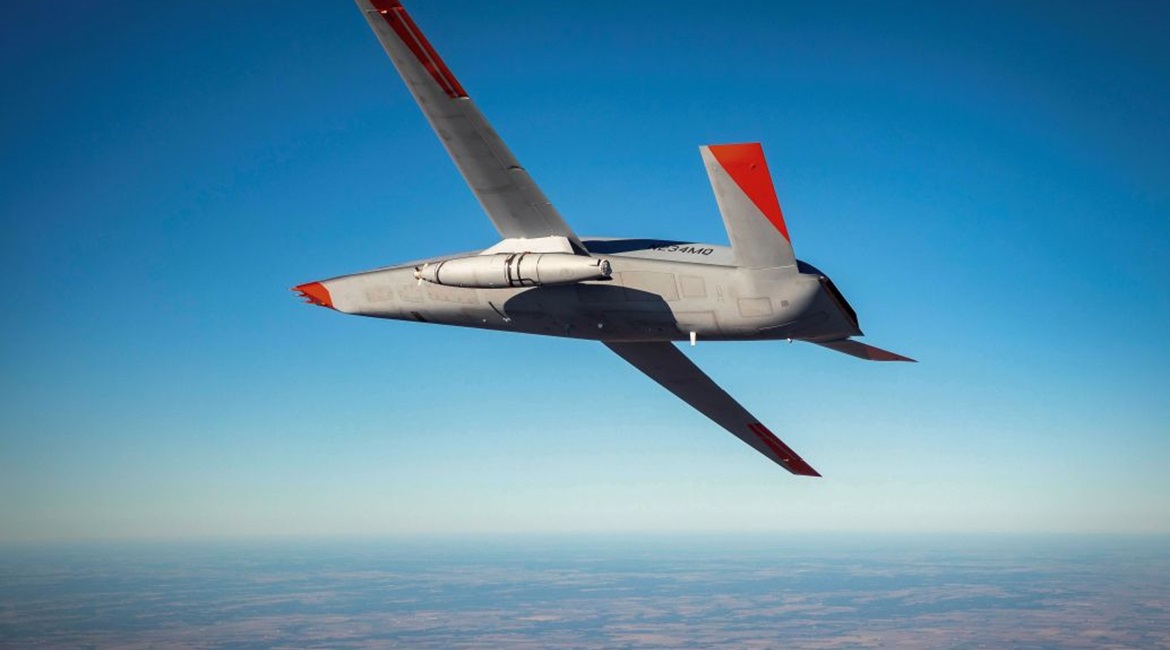
Boeing and the US Navy (USN) flew the MQ-25A Stingray unmanned refuelling and intelligence, surveillance, and reconnaissance (ISR) T1 test asset in its aerial refuelling configuration for the first time on 9 December, according to a company statement.
Cobham Mission Systems’ underwing-mounted refuelling buddy store flew on the MQ-25A T1 test asset, according to Cobham. A buddy store is an external pod, located on an aircraft hard point such as an ejector rack. It contains the equipment for “buddy tanking” another aircraft using a hose and drogue air-to-air refuelling system. Cobham said that the test helped to validate the MQ-25A’s aerodynamics while carrying existing refuelling equipment.

Boeing and the USN flew the MQ-25A T1 test asset for the first time in its aerial refuelling configuration on 9 December. Cobham Mission Systems’ 31-301 model buddy store is mounted under the left wing. (Boeing)
The buddy store is mounted under the inboard portion on the wing of the MQ-25A T1 test asset. The USN’s Boeing F/A-18 Super Hornet fleet operates the same 31-301 buddy store when performing this aerial refuelling role.
The two-and-a-half hour flight was performed by Boeing test pilots operating from a ground control station (GCS) at MidAmerica St. Louis Airport in Mascouta, Illinois. Future flights will continue to test the aerodynamics of the aircraft and the 31-301 series buddy store at various points of the flight envelope. Insights from the tests will inform the eventual progression to the extension and retraction of the hose and drogue used in refuelling.
The buddy store carries and draws fuel from the aircraft’s system. The system has an internal capacity of 1,136 litres and can pump fuel to a receiver aircraft at the rate of 833 litres per minute with a drogue pressure of 30–60 psi.
Looking to read the full article?
Gain unlimited access to Janes news and more...




